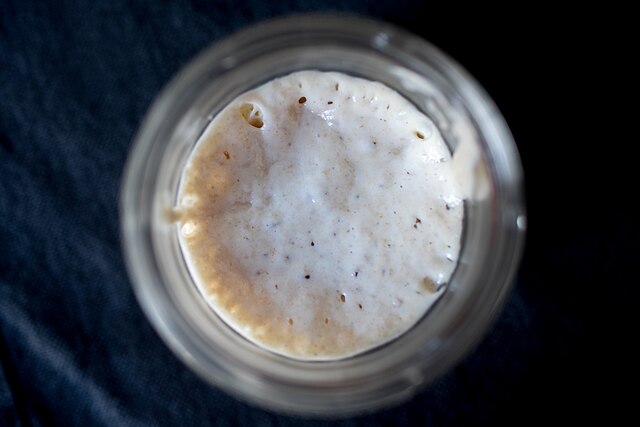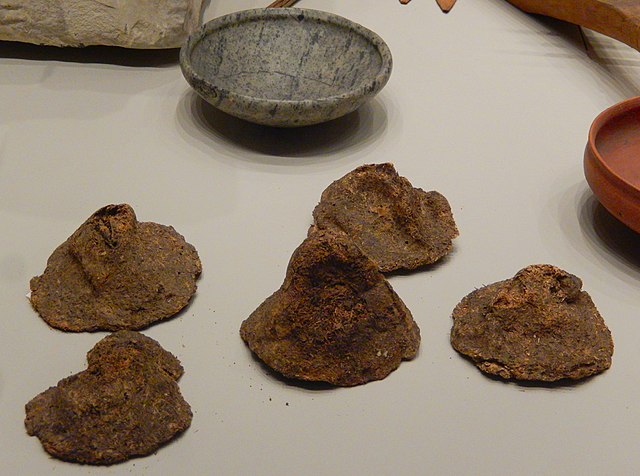Yogurt is a food produced by bacterial fermentation of milk. Fermentation of sugars in the milk by these bacteria produces lactic acid, which acts on milk protein to give yogurt its texture and characteristic tart flavor. Cow's milk is most commonly used to make yogurt. Milk from water buffalo, goats, ewes, mares, camels, and yaks is also used to produce yogurt. The milk used may be homogenized or not. It may be pasteurized or raw. Each type of milk produces substantially different results.
A plate of yogurt
Unstirred Turkish Süzme Yoğurt (strained yogurt), with a 10% fat content
Tzatziki or cacık is a meze made with yogurt, cucumber, olive oil and fresh mint or dill.
A coffee filter used to strain yogurt in a home refrigerator
Fermentation in food processing
In food processing, fermentation is the conversion of carbohydrates to alcohol or organic acids using microorganisms—yeasts or bacteria—under anaerobic (oxygen-free) conditions. Fermentation usually implies that the action of microorganisms is desired. The science of fermentation is known as zymology or zymurgy.
Grapes being trodden to extract the juice and made into wine in storage jars. Tomb of Nakht, 18th dynasty, Thebes, Ancient Egypt.
Sourdough starter.
Conical loaves of bread left as grave goods, exactly as laid out in the Great Tomb at Gebelein, Egypt, 2435-2305 BC
Beer and bread, two major uses of fermentation in food








